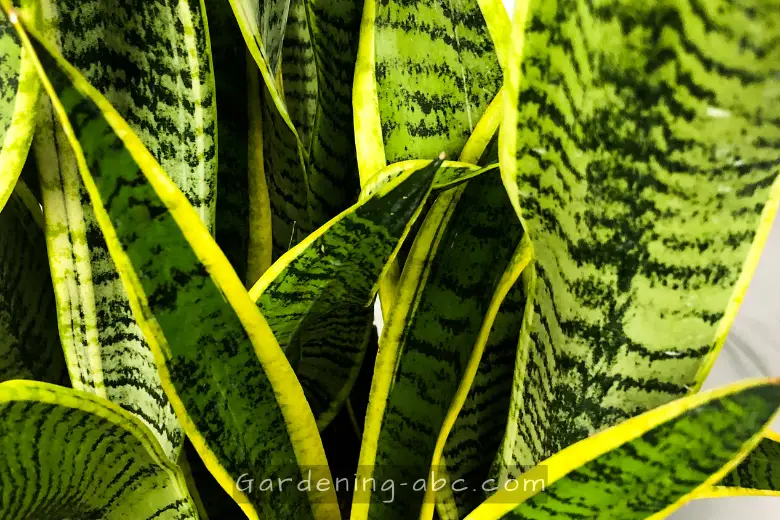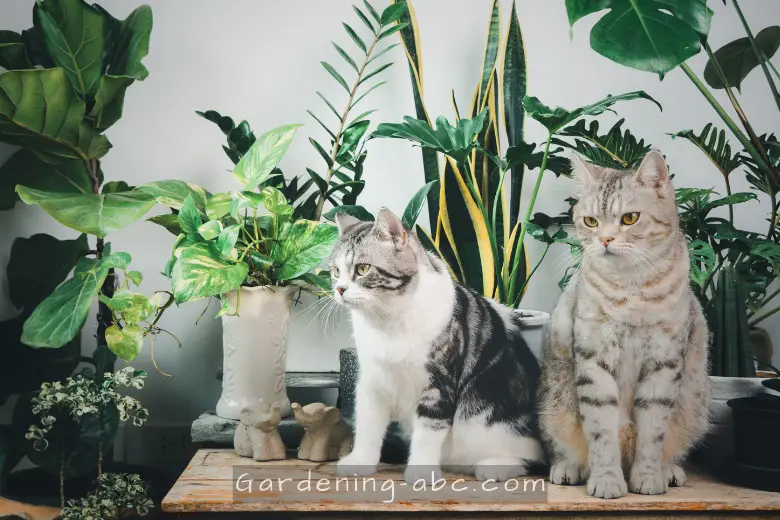We use affiliate links to run our site. When you buy through links on our site, we may earn an affiliate commission, without any added cost to you. Learn more
Houseplants can add beauty and fresh air to any home, but for cat owners, selecting the right houseplants is crucial for the health and safety of their furry friends. While many plants can be toxic to cats, it’s not always easy to determine which ones are dangerous.
In this article, we will provide a comprehensive guide to nine common houseplants that every cat owner should avoid.
We will also offer suggestions for non-toxic plant alternatives that can add a touch of greenery to your home without posing a threat to your feline companion.
Keep reading to learn how to keep your cat safe while enjoying the benefits of indoor plants.
The dangers of toxic houseplants for cats:
Toxic houseplants pose a serious threat to the health of cats. When ingested, many toxic plants can cause gastrointestinal upset such as vomiting, diarrhea, and loss of appetite.
These symptoms can be severe and may lead to dehydration and malnutrition if not treated promptly.
In addition to this, some plants can also cause skin irritation like itching, redness, and even blisters if your pet comes into contact with them.
More serious consequences of toxic plant ingestion can include organ failure and seizures. Some plants contain toxins that can damage a cat’s liver, kidneys, or other vital organs.
This damage can be irreversible and can lead to chronic health problems or even death. In some cases, the toxins in certain plants can cause seizures, which can be life-threatening if not treated promptly.
So if you have a cat it is important for you to be aware of the potential dangers of toxic houseplants and take steps to protect your pet.
List of common toxic houseplants for cats

Here is a list of 9 common houseplants that are toxic to cats, along with information on why they are toxic, what symptoms they can cause, and what to do if a cat ingests them:
1. Sago Palm (Cycas revoluta):
All parts of the Sago Palm are toxic to cats, especially the seeds or nuts. Ingestion can lead to vomiting, diarrhea, liver failure, seizures, and death. If a cat ingests any part of a Sago Palm, seek immediate veterinary attention.
2. Lilies (Lilium or Hemerocallis spp.):
Certain types of lilies, including Easter lilies, Tiger lilies, and Asiatic lilies, are highly toxic to cats. Ingestion can cause vomiting, loss of appetite, lethargy, kidney failure, and even death. If a cat ingests any part of a lily, seek immediate veterinary attention.
3. Aloe Vera:
While Aloe Vera is known for its medicinal properties for humans, it can be toxic to cats if ingested. Ingestion can cause vomiting, diarrhea, lethargy, and tremors. If a cat ingests Aloe Vera, monitor them closely and seek veterinary attention if symptoms persist.
4. Philodendron:
The Philodendron plant contains calcium oxalate crystals, which can cause oral irritation, vomiting, and difficulty swallowing if ingested. In severe cases, it can lead to swelling of the mouth and throat, which can make it difficult for cats to breathe. If a cat ingests Philodendron, monitor them closely and seek veterinary attention if symptoms persist.
5. Pothos (Epipremnum aureum):
The Pothos plant is another plant that contains calcium oxalate crystals, which can cause oral irritation, vomiting, and difficulty swallowing if ingested. In severe cases, it can lead to swelling of the mouth and throat, which can make it difficult for cats to breathe.
If a cat ingests Pothos, monitor them closely and seek veterinary attention if symptoms persist.
6. Dieffenbachia:
The Dieffenbachia plant contains calcium oxalate crystals, which can cause oral irritation, vomiting, and difficulty swallowing if ingested. In severe cases, it can lead to swelling of the mouth and throat, which can make it difficult for cats to breathe. If a cat ingests Dieffenbachia, monitor them closely and seek veterinary attention if symptoms persist.
7. ZZ Plant:
The ZZ plant contains toxic compounds in the leaves and stems, including calcium oxalate, which can cause mouth irritation, stomach discomfort, vomiting, skin irritation, and allergic reactions in some people and pets.
In severe cases, it can lead to swelling of the mouth and throat, which can make it difficult for cats to breathe.
If a cat ingests a ZZ Plant, monitor them closely and seek veterinary attention if symptoms persist.
8. Jade Plant:
The Jade Plant is toxic to cats because it contains a toxin called bufadienolides, which can cause vomiting, diarrhea, depression, and slow heart rate if ingested. If a cat ingests Jade Plant, seek immediate veterinary attention.
How to care for a jade bonsai tree
9. Snake Plant:
The Snake Plant is also known as Mother-in-Law’s Tongue and is toxic to cats. It contains saponins, which can cause vomiting, diarrhea, and drooling if ingested. In severe cases, it can lead to respiratory failure. If a cat ingests Snake Plant, seek immediate veterinary attention.
10. Elephant Ears:
Elephant ears contain insoluble calcium oxalate crystals that can cause oral inflammation, diarrhea, loss of appetite, mouth pain, and dysphagia in cats. When a cat chews any part of the plant, these needle-sharp crystals penetrate the oral mucosa and pharynx, producing intense pain and burning.
If your cat eats an elephant ear, you should brush any plant pieces off of your cat’s body, remove any leaf or stem pieces if you can safely reach into your cat’s mouth, and place your cat somewhere secure, like its carrier or a smaller room.
Also, contact your veterinarian immediately if your cat shows any symptoms of toxicity
Tips for keeping cats safe around houseplants:
Here are some tips for keeping cats safe around houseplants:
1. Place plants out of reach:
Keep plants on high shelves or in hanging baskets where cats cannot reach them. You can also use plant stands or barriers to prevent cats from accessing the plants.
2. Use deterrents:
Some natural deterrents can help keep cats away from plants, such as citrus peels or vinegar. You can also try commercial deterrents specifically designed for pets.
3. Train cats to avoid plants:
Cats can be trained to avoid certain areas or objects using positive reinforcement techniques. Offer treats or toys in areas away from the plants to encourage cats to stay away from them.
4. Observe cats for signs of illness:
Keep an eye on your cat’s behavior and symptoms, such as vomiting, diarrhea, lethargy, and seizures. If you suspect your cat has ingested a toxic plant, seek veterinary care immediately.
5. Offer alternative play and stimulation:
Provide your cat with alternative sources of play and stimulation, such as toys, scratching posts, and climbing trees. This can help redirect their attention away from plants.
6. Use Cat-friendly Plants:
There are many cat-friendly plants that you can use to decorate your home. Plants like Spider plants, African Violet, Christmas Cactus, etc are perfectly safe for your cats. Before bringing a new plant into your home, you should thoroughly research it to ensure that it is safe for your cat.
Create a pet-friendly garden
Final Thoughts:
It is crucial to be aware of the potential dangers of toxic houseplants to cats and to take steps to keep our furry friends safe. By following the tips outlined in this article, such as choosing non-toxic plants and keeping plants out of reach, we can create a safe and happy environment for both our plants and our pets.
Remember to keep a watchful eye on your cats for any signs of illness, and seek veterinary care immediately if you suspect they have ingested a toxic plant.
If you found this article helpful, please share it with other pet owners who may benefit from this information. And don’t forget to explore more articles on this site for growing and taking care of plants.
Take action today and create a safe and healthy environment for your feline friends.
Amazon and the Amazon logo are trademarks of Amazon.com, Inc, or its affiliates.

Hi there! My name is Prasenjit and I’m an avid gardener and someone who has grown a passion for growing plants. From my hands-on experience, I have learned what works and what doesn’t. Here I share everything I have learned.
